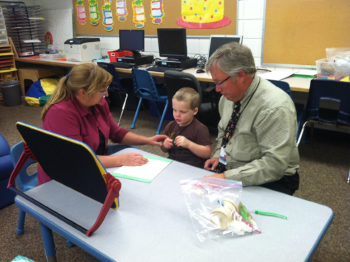Characteristics of Good Programs
Children with deafblindness require teaching methods and educational settings that take into account all the ways that the combination of absent or limited vision and hearing impact learning.

The resources on this page provide an overview of characteristics of good programs, such as:
- Building trust
- Individualizing instruction
- Providing structured, responsive environments
- Maximizing the use of vision, hearing, and other senses
- Coordination of instruction by team members
Other sections of the Info Center provide more detail on these topics.
See also: Impact of Deafblindness on Learning
Students who are deaf-blind present a unique challenge to families, schools, and communities. Despite their designation, they represent an extremely heterogeneous population. Given their relatively small size in number, as well as their diversity, curriculum and instructional arrangements must remain flexible. (Jackson, 2005)
Introductory Resources
Learn More
Offline Resource
Book chapter: Welch, T, R. (2005). Effective service delivery. In K. M. Heubner, J. G. Prickett, T. R. Welch, & E. Joffee (Eds.), Hand in hand: Essentials of communication and orientation and mobility for your students who are deaf-blind (pp. 111-149). AFB Press.
Reference
Jackson, R. M. (2005, updated 2011). Curriculum access for students with low-incidence disabilities: The promise of universal design for learning. National Center on Accessible Educational Materials.
KEEP EXPLORING